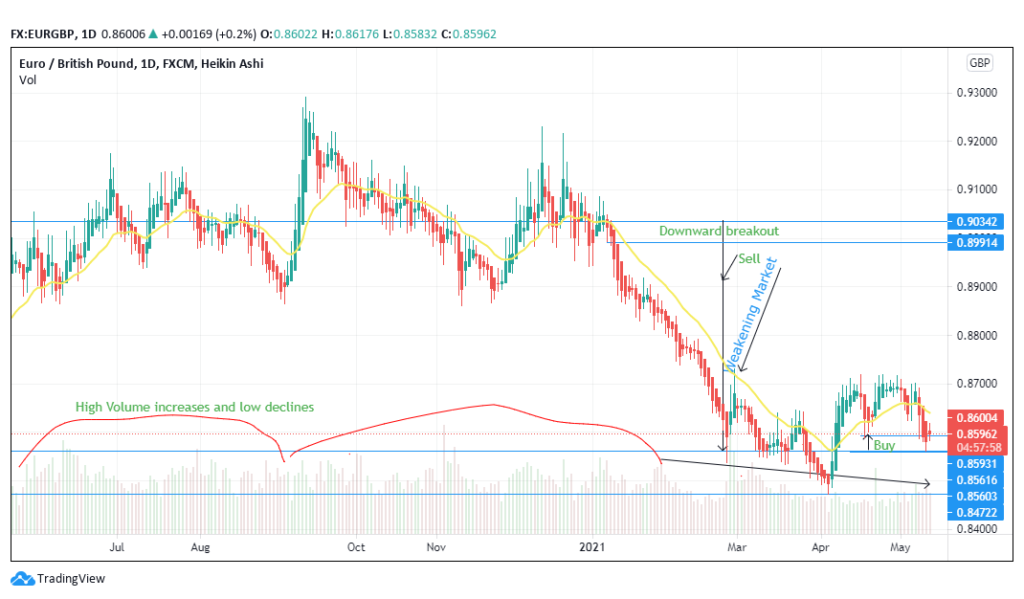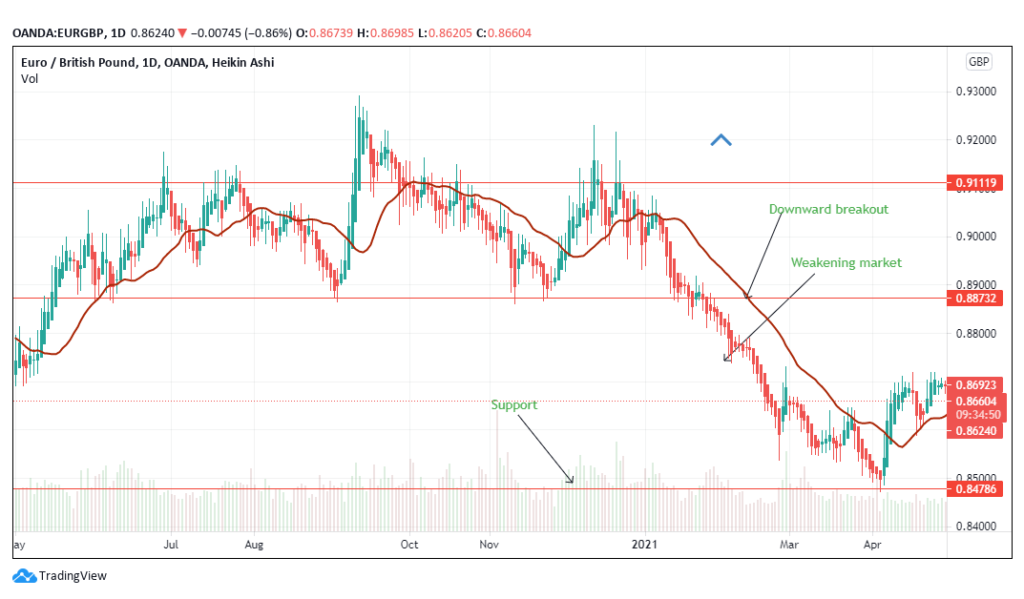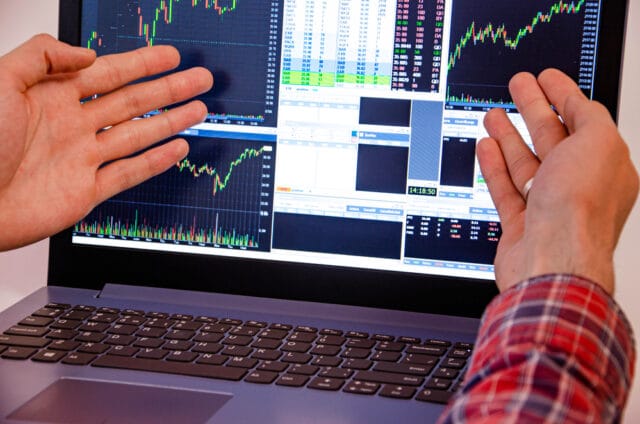There are many investment opportunities in the financial markets and forex in particular, but the choice of style depends upon the trader’s skill and psychological setup.
Aspects such as technical or fundamental analysis are key in developing trading skills. Sometimes traders like interpreting bullish/bearish chart patterns before making their entry or exit in the market.
Forex pairs form short-term trend patterns. One may enter a trade just when the pattern is reversing. In such cases, research is vital before picking a particular trading pair. As a rule of thumb, always invest in something that you can explain in simple terms (it works in stocks and forex).
Strategy
Consistency is the main point in any strategy. Technical and fundamental analysis should be combined with emotional and money-management skills.
When speculating on stocks, traders who focus on technical analysis should also consider the financial fundamentals, such as PE ratios, sales, and revenue dynamics. Successful forex trading also requires the integration of price strategy as well as fundamental analysis, and the priority each of them is given will depend on the time frame.
However, even with the well-tested strategy on hand, it is only the commitment that will reward both the FX and stock speculators.
Price-action trading
A trader can assess the pair’s chart and enter or exit the market without considering the use of indicators, but by simply observing the peaks and troughs. Price action gives traders signals to execute their trades.

The chart above shows that the EUR/GBP is weakening. A trader will consider that the euro was getting depressed due to Eurozone fundamental news from the beginning of January 2021.
From May 2020 (according to the 1-year dynamic in the trading chart), the subsequent spikes faded but made strong movements. Higher highs (HHS) indicate that the pair faced the peaks that may trigger buy and short selling.
A strengthening market is perceived by most traders and speculators as a buy signal as they evaluate resistance. However, in a weakening market the majority is selling, so that trader’s challenge is to estimate support correctly.

Figure 2: Downward breakout shown by the weakening EUR/GBP trading chart
The downward breakout in the example above has been confirmed as the price moved below 0.8873. A trader can simply use the price-action to initiate the short-sell position. The downward breakout shows that the pound got the upper hand as the euro slipped.
The market has weakened to the point that only lower lows are visible. Fewer and lower highs indicate that it will take a while before prices climb to the resistance point.
Integration of indicators
In figure 3, we used volume and moving average indicators to confirm the price action of the EUR/GBP pair.

Figure 3: Using volume and moving averages to confirm the price action strategy
The 20-day exponential moving average (EMA) has moved below the higher highs in the strengthening market.
The movement suggests an uptrend that resembles an earlier bullish run of the EUR/GBP pair. Prices stood above 0.9034, which now became psychological resistance.
The pair hit a sharp reversal owing to the shifting price movement. The decline caused by the weakening market was illustrated by the 20-day EMA that moved above the market price.
In a strong market, the price rises above the EMA, while in a weak market, the EMA will move above the price.
The chart above has another indicator – the volume change. In the chart, volume began rising from June 2020 along with the price, which was then ranging between 0.91119 and 0.88732 until the sharp September uptrend. The uptrend did not last long and the following reversal lasted through November 2020 touching the support level of 0.88732 twice.
The steep uptrend that started in January 2021 and lasted through March, with 0.86604 as a new resistance level that was not broken until mid-April, when the declining volume gave way to an increase in prices from 0.86240 to 0.86604. Before that, the volume shifted and began rising in the first decade of March 2021, accompanied by a temporary breakthrough and a reversal attempt. The trader can see an increasing momentum.
In trading, when the volume increases, it indicates that there are many buy and sell actions among traders at a certain price.
In forex, the buyers are seen as in control when there is a high-volume action concurrent with the increase in the trading pair’s price. The trader should then anticipate a decline in prices as the price reaches the ceiling of resistance. When there is a decline in volume, concurrent with decreasing prices of the pair, then the sellers are in charge. The trader then expects a shift or reversal in prices after the prices find the floor or support.

Finally, the new support line of the EUR/GBP pair at 0.8479 was touched on April 5, 2021. This support coincides with the price moving above the 20-day EMA.
There is also an increase in the volume action showing that buyers are in control of the market. However, since the market is still reeling due to the weak status, it will take some time before reaching the 0.9111 resistance line at the top.
Fundamental analysis
Traders should also follow any fundamental news affecting the price movement of the EUR/GBP pair. The news consists of political influences by governments in Europe and Britain, economic/ financial decisions, and societal opinions.
For example, the world was grappling with the Covid-19 pandemic (a societal challenge that also affected the exchange rates). Britain was rushing to implement Brexit’s transition. The weakening market in figure 4 explains the continuous run by the pound after Britain completed the transition in December 2020.
Conclusion
A successful trader will use an investment strategy that includes a combination of technical and fundamental analysis.
Understanding the price action alone may misguide if the trader does not consider the political or economic news affecting price movement.




